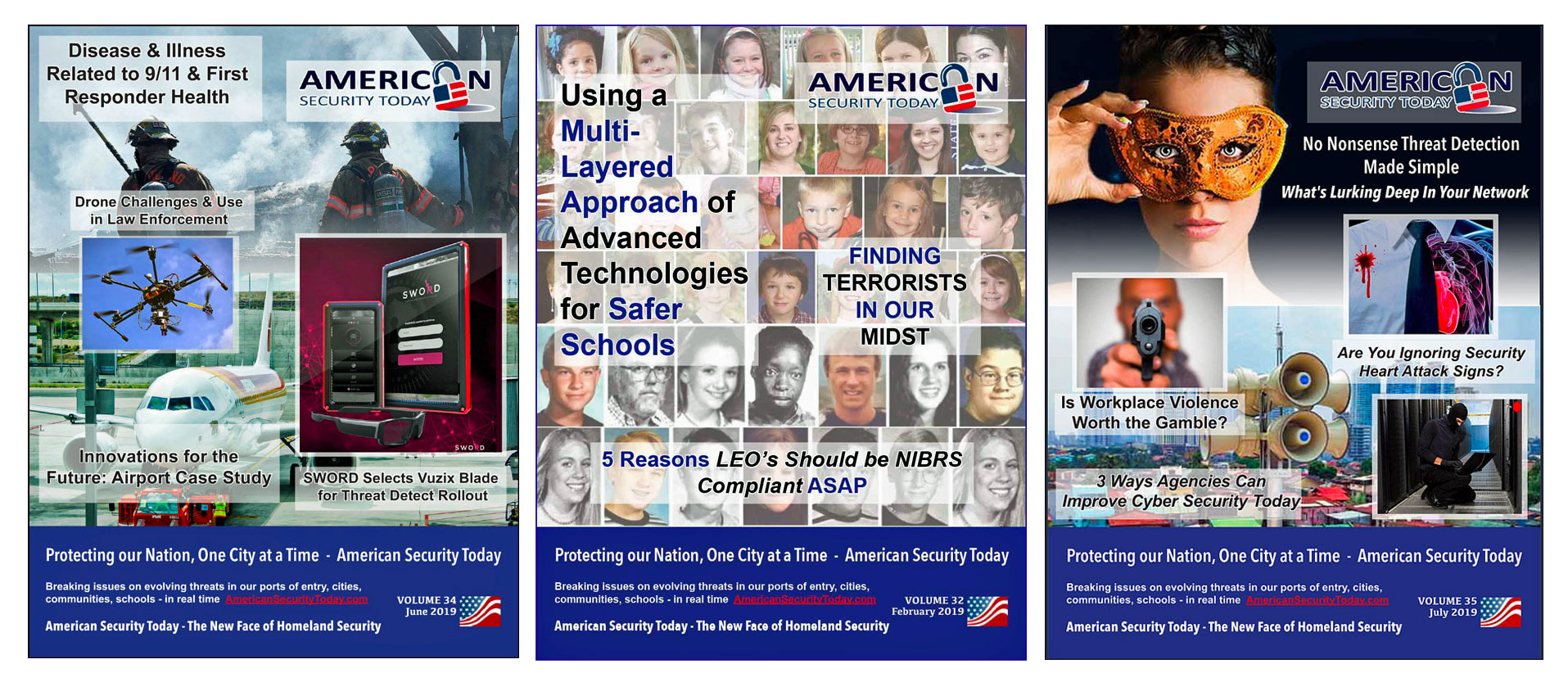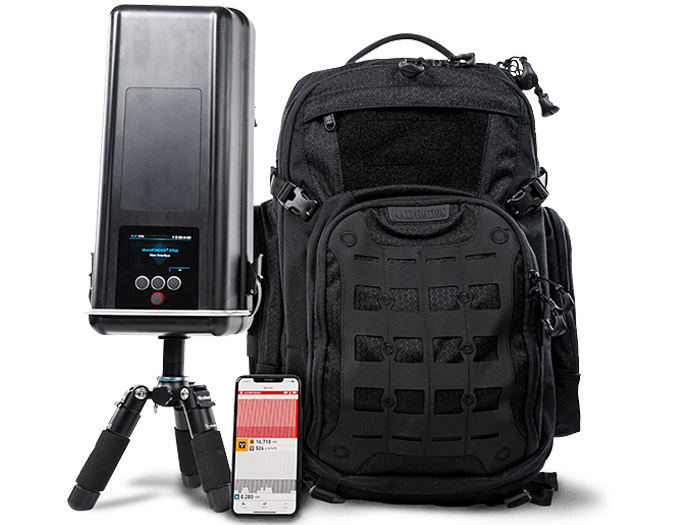
The DHS Science & Technology Directorate (S&T) Small Business Innovation Research (SBIR) 22.1 Solicitation is now open for U.S. small businesses to submit research proposals for a broad range of 11 homeland security technology needs.
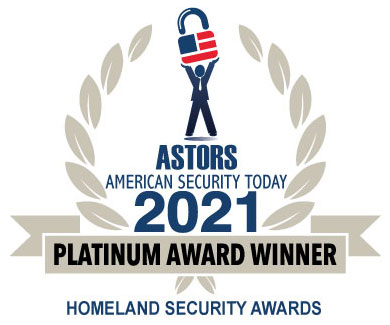
“A strength of the DHS SBIR program is that each year we can partner with innovative small businesses from diverse backgrounds that specialize in a variety of technological interests that can help DHS execute its mission,” said Dusty Lang, director, DHS SBIR Program.
“I encourage all small businesses, including those that do not have prior DHS or federal government contract experience, to consider submitting proposals for this year’s topics to help expand the Homeland Security Enterprise market and capabilities.”

During the solicitation period, DHS will accept proposals for topics until 1:00 p.m. ET on January 19, 2022.
Interested small businesses must submit proposals through the online proposal submission system at https://sbir.dhs.gov.
The solicitation is published at SAM.gov and details the following topics with further descriptions:
DHS221-001 – Automated Artificial Intelligence (AI) Distress Alerts and Monitoring
-
Each Coast Guard Command Center has a human listening to radio distress frequencies – namely listening to static for 12 hours per day.
-
This is a monotonous, but a critical duty.
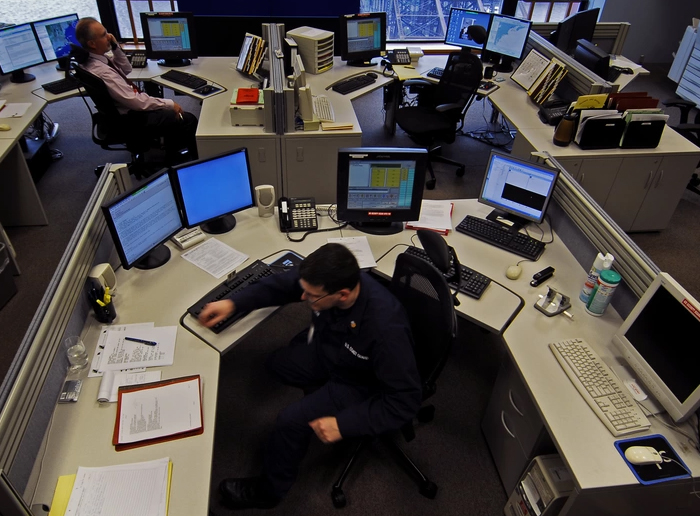
-
Because of the nature of these calls, and the numerous hoax calls, it is often difficult for a human to glean the criticality of these calls and get all the required information from them.
-
The challenge is a watchstander may be less attentive after spending 12 hours throughout the day listening for distress activities.
-
An Artificial Intelligence (AI) system could consume the audio, analyze the audio in real-time, learn to detect a real call from a hoax, and then send the information to a watchstander.
-
This system could alleviate hundreds of watchstanding positions therefore, making Search and Rescue (SAR) distress monitoring much more successful.
For further details, please go to https://www.sbir.gov/node/2100465.
DHS221-002 – Rapidly deployable countermeasures at protected perimeters and structures
-
Law Enforcement Officers (LEO) are often called upon to secure buildings and structures during events with a large number of attendees.
-
During celebratory or protesting events, portions of crowds may become destructive or aggressive and enter or attempt to enter restricted, private or protected sites or structures.
-
Law Enforcement Officers (LEO) deploy physical barriers and other countermeasures in an attempt to mitigate incursions.
-
However, protection of sites against incursions would benefit from an additional layer of advanced technology solutions to delay crowd advancement, prior to the need for direct engagement, while LEOs can muster additional staffing and/or resources.

-
There is a need to develop a capability to immobilize aggressors through deploying a substance/ material to a surface which would, remain passive until activated or be activated concurrent with deployment.
-
The capability will need to be able to be rapidly deployed in an active state or deployed beforehand and rapidly activated to prevent malicious actors from breaching perimeters.
-
If the identified solution exists in ready-to-deploy state, it must blend in aesthetically to existing infrastructure prior to activation.
-
Successful deployment of this technology would deter or delay incursion to allow LEOs the time and space needed to dispatch additional reaction forces and countermeasures to defend sites or structures.
-
The desired technical solutions would minimally occupy the initial staff once activated and should not contribute to LEO entanglement with the crowd.
-
Lastly, once activated, the solution should be highly visible (brightly colored, impregnated with flash material, etc.) so as to mark the deployed location and prevent any person not attempting incursion from accidentally becoming immobilized.
(An inside look at the damage to Portland’s federal courthouse after dozens of nights of demonstrations. Courtesy of KPTV FOX 12 Oregon and YouTube. Posted on Jul 24, 2020.)
For further details, please go to https://www.sbir.gov/node/2100467.
DHS221-003 – Non-Invasive and Real-time Detection of Counterfeit Microelectronics
-
Counterfeit electronics are a growing issue in the global market, and some counterfeits are infiltrating high-risk applications.
-
The growing volume of inbound electronics parts passing through U.S. Ports of Entry (POEs) requires new or improved inspection techniques that can be a force multiplier to help prevent entry of counterfeit chips and tampered systems in the homeland.
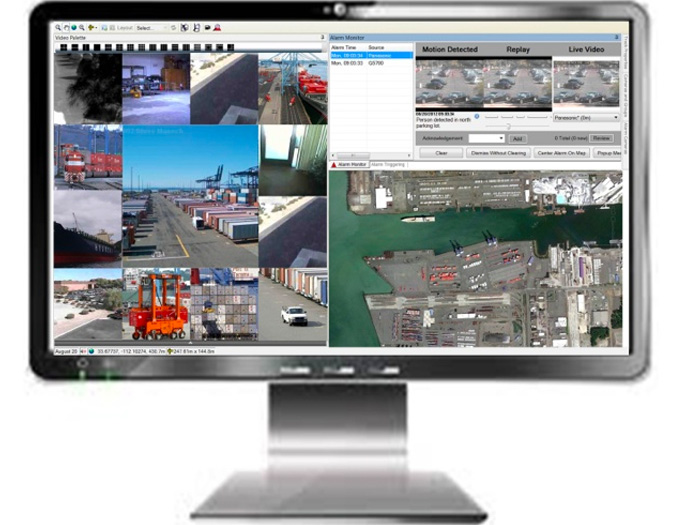
-
Current techniques are extremely slow (take hours to days depending on the size of the device under test) and costly (thousands of dollars).
-
Most techniques are based on electrical testing which is labor-intensive and timely process and require either a subject matter expert (SME) to analyze the results or expensive (hundreds of thousands of dollars) machines for imaging such as heavy X-ray imaging microscopes which can reveal physical defects/abnormalities.
-
Of particular interest are advanced image-based machine learning algorithms and image analysis and processing techniques that rely on handheld physical inspection modalities capable of providing real-time detection of counterfeits integrated circuits (ICs) and printed board circuits (PCBs).
For further details, please go to https://www.sbir.gov/node/2100469.
DHS221-004 – Broadband Push-to-Talk Interoperability Platform
-
Broadband Push-to-Talk (PTT) services are offered by a diverse group of vendors. These PTT services provide important communication services for the first responder community during public safety incidents and events.
-
U.S. and state local territorial and tribal (SLTT) agencies may utilize different PTT services which can result in obstacles to interoperable communications.
-
PTT communication platforms have been developed to support first responder communications over the past 15 years.
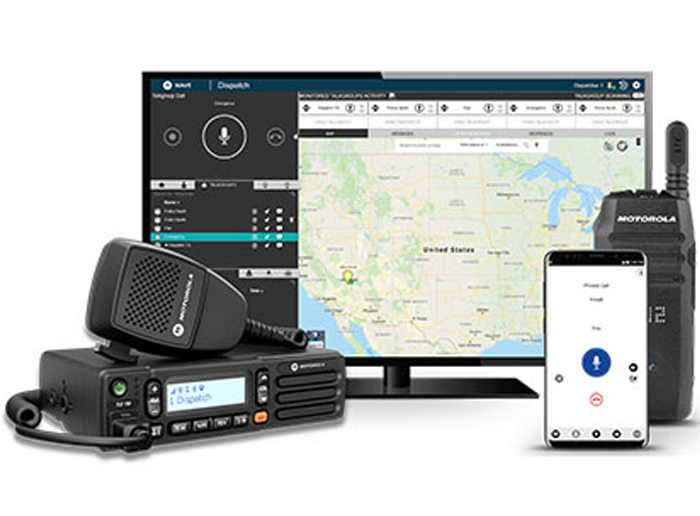
-
Some of these services are based upon the Internet Engineering Task Force (IETF) Real-Time Protocol (RTP) and Real-Time Control Protocol (RTCP) for payload and control plane communications.
-
In some instances, platforms utilize the secure versions (SRTP and SRTCP) of these protocols to provide encrypted communications.
-
PTT services offered by non-network operators are an important subset of available product offerings as they are network agnostic and can facilitate interoperability between diverse responder communities and across multiple cellular networks.
-
With major U.S. network operators providing priority and preemption for first responders, non-network-based PTT services can deliver mission-critical grade services to end-users.
-
Cellular network operators are also offering Mission Critical Services (MCS), including Mission Critical Push to Talk (MCPTT), to support the needs of first responders based upon standards developed by the Third Generation Partnership Project (3GPP) and are tightly integrated with the Enhanced Packet Core (EPC).
-
One primary advantage of core-based MCS is elevated priority access that delivers the highest level of priority service for first responders. These include the following 3GPP solutions: FirstNet MCPTT (Samsung), FirstNet MCPTT (Motorola), Verizon PTT Responder.
-
We are seeking a broadband PTT interface solution that will provide a method to combine these diverse communication platforms while maintaining critical metadata that is needed to ensure that first responders maintain interoperable communications during critical incidents and planned events.
For further details, please go to https://www.sbir.gov/node/2100471.
DHS221-005 – A Step Towards Agent Agnostic Detection of Biological Hazards
-
As of mid-2021, the DHS BioWatch system detects only small and specific DNA-signatures of six commonly known biological agents.
-
Both the biological threat landscape and public health requirements have evolved significantly since the United States Government (USG) deployed BioWatch in 2003; accordingly, the USG must now similarly evolve its biological hazard perception capabilities and its population health monitoring posture.
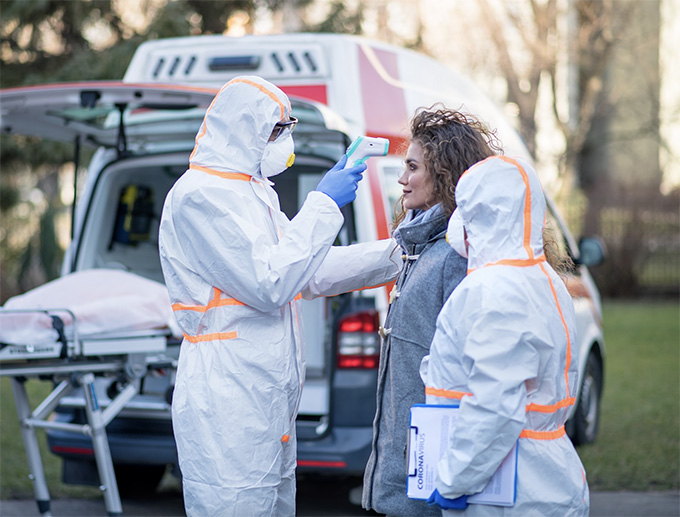
-
The long-term vision (2035) is to instantan-eously detect any biological agent or form of matter present in an atmospheric sample with high specificity and sensitivity as it passes through a portable detector module.
-
This topic requests a proposed creative solution that addresses the problem of rapid spectral deconvolution of complex samples.
-
There has been palpable innovation in spectrometer miniaturization over the past decade, some of which has been powered by advanced algorithmic techniques, and we expect scientists and engineers to apply machine learning (ML) to such algorithms in the immediate future.
-
In response to this topic we request a proposed ML-based algorithm solution that instantaneously identifies a molecule based on its spectral properties.
For further details, please go to https://www.sbir.gov/node/2100473.
DHS221-006 – Streamlined Airport Checkpoint Screening for Limited Mobility Passengers
-
The Air Carrier Access Act of 1986 (ACAA) addresses the access to air travel for handicapped and elderly air travelers, ensuring equal access to air travel accommodations and directing equal or similar treatment to that of other travelers.
-
The Transportation Security Administration (TSA) is tasked with screening all air passengers at airport checkpoints before they board outgoing aircraft.
-
However, while the ACAA dictates that an individual with a disability must undergo the same security screening as any other member of the traveling public, under current policies, these travelers cannot be screened without subjecting them to manual searches typical of only a small percentage of other travelers.
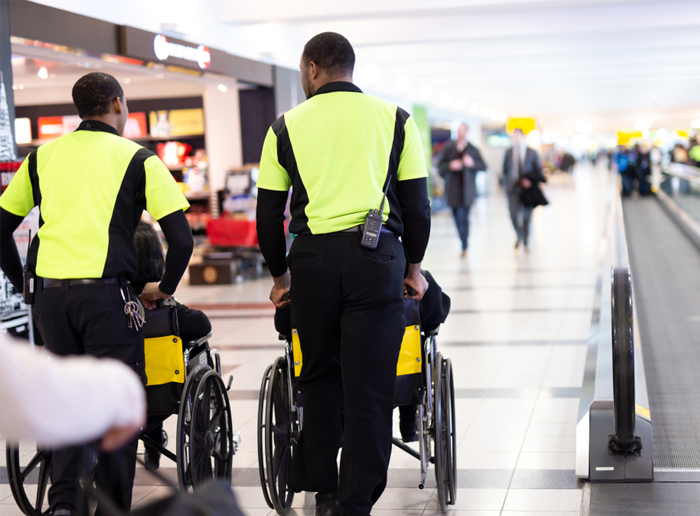
-
Current airport checkpoint screening consists of X-ray screening of carry-on belongings, followed by millimeter-wave based body scanning or metal detection screening for threat item alarm, followed by manual pat down for those individuals alarmed on.
-
However, in the case of elderly or handicapped individuals with an ambulatory disability that prohibits a typical body scan (e.g. standing with arms over head for five seconds), current policy dictates that these passengers be diverted and manually screened for contraband and threat items, and all assistance devices (e.g. wheelchairs, canes, etc.) be searched for any hidden items.
-
This step can add additional time and inconvenience for elderly and handicapped travelers and represent a general delay to the overall flow of passengers.
-
These constraints require the development of additional capabilities that will allow rapid airport checkpoint screening of handicapped and elderly travelers with ambulatory disabilities that is on par with that of other travelers in terms of speed and convenience to the passenger.
For further details, please go to https://www.sbir.gov/node/2100477.
DHS221-007 – Mass Fatality Tracking System (MFTS)
-
As seen recently at the Surfside Condominium Collapse, the recovery of human remains following an MCI provides responders with a multitude of difficult challenges.
-
Without a formal system in place to collect consistent and quality recovery information in a repeatable process causes both a delay in relevant information collection and the likelihood to miss important location details.
(At least 97 people are confirmed dead, with crews still working to clear the rubble from the June 24 tragedy at the Champlain Towers South building. On Thursday, Miami-Dade County police released the identities of four more victims. Courtesy of WPLG Local 10 and YouTube. Posted on Jul 15, 2021.)
-
The initiation of a human remains recovery record should begin with the collection of comprehensive documentation describing the point of discovery and location to preserve all key forensic data.
-
Following an MCI, these critical pieces of information may be invaluable in identifying the individual, determining cause of death, and documenting evidence. Further, the addition of photos and site details will assist in all aspects of the tasks mentioned above.
-
At present, First Responders, Urban Search & Rescue (US&R), Disaster Mortuary (DMORT) teams, Coroners, and Medical Examiners do not have a system to adequately support the immediate collection and processing of hundreds or thousands of human remains.
-
Falling behind on this effort will inflict compounding levels of disorder as related implications grow.
-
The reality of this situation is that local communities are not prepared to support the information collection and maintenance requirements for the recovery, processing, and storage of large quantities of fatalities.
For further details, please go to https://www.sbir.gov/node/2100481.
DHS221-008 – Next-Generation High-Performance, Low Cost, Semiconductor-Based Spectroscopic Personal Radiation Detectors (SPRDs)
-
The government is seeking innovative technologies to detect aerosolized chemical threats, such as Chemical Warfare Agents (CWAs), Toxic Industrial Chemicals/Materials (TICs/TIMs), and Pharmaceutical-Based Agents (PBAs) in the field.
-
This detection technology would be used to detect multiple chemicals threats within a sample in a complex environmental background.
-
Preferable technology would be a small, wearable, multi-threat chemical detector that can be employed by DHS emergency response and law enforcement personnel.
(See the 2021 Platinum ‘ASTORS’ Award Winner for Best CBRNE Detection Solution, the FLIR identiFINDER R700 Backpack Radiation Detector (BRD). Once dismounted, the identiFINDER R700 provides the capabilities required to successfully perform wide-area searches quickly and efficiently while offering exceptional sensitivity, communication, and trusted spectroscopic algorithms in a lightweight, ergonomic form-factor. Courtesy of Teledyne FLIR and YouTube.)
-
The envisioned usage of this product would warn the user about current exposure levels to potential threats before they reach concentrations immediately dangerous to life or health (IDLH).
-
This allows the user to adopt a more protective posture through awareness of the contaminated area and allow for proper donning and doxing of personal protective equipment.
For further details, please go to https://www.sbir.gov/node/2100483.
DHS221-009 – Field Forward Detection Platform for High Consequence Toxins
-
High consequence toxins such as those included in the US Select Agent and Toxin list, have a propensity to be fatal to humans and most animals in low concentrations
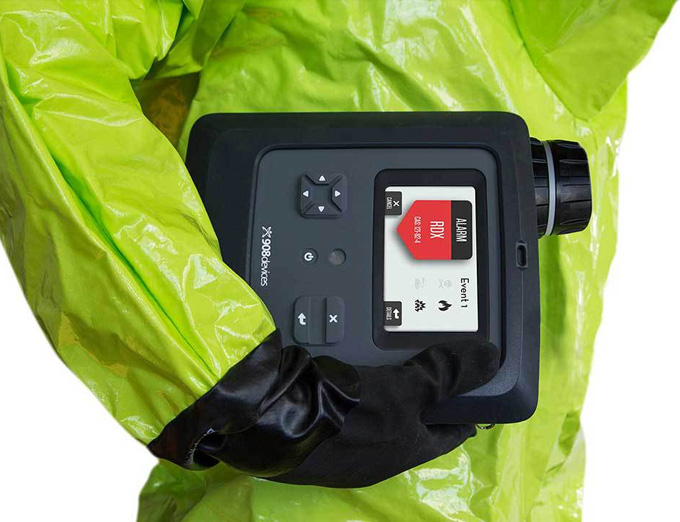
-
These toxins are some of the deadliest chemicals known posing an ongoing public health threat.
A remaining challenge for National Security programs is the availability of commercial, field-forward detection systems that are sensitive and reliable.
-
Development of detection systems for these high consequence toxins would serve to reduce the public health risk to humans and animals, by providing an early warning, enabling countermeasures to be put into place before a more consequential event occurs.
For further details, please go to https://www.sbir.gov/node/2100485.
DHS221-010 – Person Worn Detector for Aerosolized Chemical Threats
-
The government is seeking innovative technologies to detect aerosolized chemical threats, such as Chemical Warfare Agents (CWAs), Toxic Industrial Chemicals/Materials (TICs/TIMs), and Pharmaceutical-Based Agents (PBAs) in the field.

-
This detection technology would be used to detect multiple chemicals threats within a sample in a complex environmental background. Preferable technology would be a small, wearable, multi-threat chemical detector that can be employed by DHS emergency response and law enforcement personnel.
-
The envisioned usage of this product would warn the user about current exposure levels to potential threats before they reach concentrations immediately dangerous to life or health (IDLH).
-
This allows the user to adopt a more protective posture through awareness of the contaminated area and allow for proper donning and doxing of personal protective equipment.
-
Further uses may include incorporation on Unmanned Ground Vehicle or Aerial Systems (UGV, UAS) for remote detection and hazard plume mapping.
-
Current CBRN response equipment does not provide a single continuous monitoring detection system to alert personnel to the presence of aerosolized airborne chemical threats and hazards.
-
Lightweight chemical sampling and detection innovations which can be automated for such monitoring applications are desired.
-
The technology is intended to be used by personnel investigating incidents or potential threats in indoor and outdoor environments, to include large open areas and small confined spaces.
-
The device should alert a user to the presence of aerosolized hazards in time to take protective measures for the duration of a regular duty shift without requiring frequent user interaction with the device.
DHS221-011 – From Port-Side to Pen-Side: Low-Cost Detection/Diagnostics for High-Consequence Transboundary or Nationally Reportable Animal Diseases, Particularly Those with Zoonotic Propensity
-
The economic value of the United States (U.S.) poultry industry is approximately $50 billion.
-
Avian Influenza, Virulent New Castle Disease, and Marek’s Disease are caused by viral pathogens that are highly contagious and pose the risk of significant economic impact to U.S. security. Likewise, the economic value of the pork and beef industries are approximately $39 billion and $77 billion, respectively.

-
Nipah virus encephalitis, Classical and African swine fevers, Lumpy skin disease, and Bovine spongiform encephalopathy are just a few examples of infectious diseases that threaten pork and beef industry food security.
-
As the world euphemistically shrinks, the risk of pathogens arriving in the U.S. is an ever-growing concern.
-
Despite numerous efforts, significant gaps remain regarding detection/identification or medical countermeasures development to combat the etiological agents of these diseases.
-
Development of diagnostics for these pathogens would serve to mitigate the risk of serious disease outbreaks by providing early warning, so that countermeasures may be put into place before the respective industry is severely damaged or irrecoverably affected.
For further details, please go to https://www.sbir.gov/node/2100489.
(Learn More about the SBIR proposal submission process. Courtesy of the DHS Science and Technology Directorate and YouTube.)
The DHS SBIR Program is a competitive contract awards program that encourages innovative and creative U.S. small businesses to participate in federal research and development projects, as well as private sector commercialization of SBIR-funded solutions.
For more information about the DHS SBIR program, the Deconstructing SBIR webinar series offers a snapshot and highlights opportunities for small businesses to work with DHS.
DHS S&T Recognized with Multiple 2021 ‘ASTORS’ Homeland Security Awards
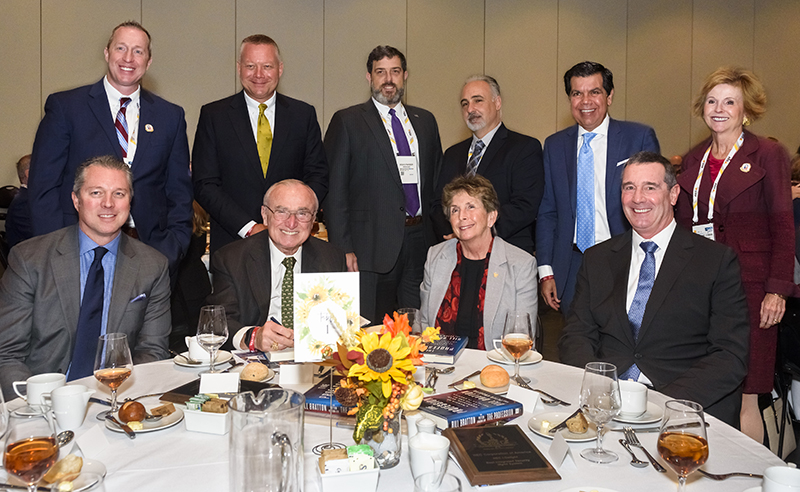
American Security Today’s Annual ‘ASTORS’ Awards is the preeminent U.S. Homeland Security Awards Program, and now in its Sixth Year, continues to recognize industry leaders of Physical and Border Security, Cybersecurity, Emergency Preparedness – Management and Response, Law Enforcement, First Responders, as well as federal, state and municipal government agencies in the acknowledgment of their outstanding efforts to Keep our Nation Secure.
DHS Science & Technology (First of Four)
-
Excellence in Public Safety
-
The DHS Science and Technology Directorate (S&T) awarded a grant to the National Center for Disaster Medicine and Public Health (NCDMPH) to develop the school-age trauma training that became First Aid for Severe Trauma (FAST).
-
FAST is the first national STOP THE BLEED® course designed specifically for high school students and made available through the American Red Cross, thanks to the S&T grant.
-
While FAST is available for anyone, the course and digital materials are offered at no charge to high school students under the age of 19.
(The FAST education program is based on funding provided by the Department of Homeland Security (DHS) Science and Technology Directorate (S&T) to the National Center for Disaster Medicine and Public Health (NCDMPH). The FAST course and digital materials, developed by the American Red Cross in collaboration with NCDMPH, will be offered at no charge to high school students under the age of 19, thanks to the S&T grant. Courtesy of the DHS Science and Technology Directorate and YouTube.)
DHS Science & Technology (Second of Four)
-
Excellence in Public Safety
-
-
Wildland Fire Sensor Technology
-
The Wildland fires present a significant threat to the United States, and the DHS Science and Technology Directorate (S&T) is fighting fire with technology.
-
Wildland Fire Sensor Technology could provide the public with the advanced notice necessary to reduce the loss of life and property while giving communities the information and time necessary to make life-saving evacuations.
-
-
(Learn More, courtesy of the DHS Science and Technology Directorate and YouTube.)
DHS Science & Technology (Third of Four)
- Excellence in Homeland Security
-
In the event of a radiological or nuclear incident, emergency response agencies and HAZMAT teams could utilize this new technology to set up community reception centers to screen members of the public for potential exposure to radioactive contaminants.

-
Two inventors from the DHS National Urban Security Technology Laboratory (NUSTL) have developed a personal radiation detector (PRD) that could be placed beneath an entry ramp to detect radioactivity on the shoes of people being pre-screened before entering main screening areas.
-
This innovative and unique new device emits an alarm sound that is both louder than, and distinctive from other alarms, to ensure it can be easily heard and distinguished from other devices.
-
Additionally, the remote alarm box does not require any batteries nor external power and can be stored indefinitely without maintenance so that it is immediately ready for use in an emergency.
DHS Science & Technology (Fourth of Four)
-
Excellence in Homeland Security
-
DHS S&T identifies research the agency will conduct to understand the opportunities, as well as the risks, that accompany the rapidly changing AI/ML technology landscape and its impacts to DHS missions, and incorporate the technological advancements in AI/ML to enhance the efficiency and effectiveness of the DHS operational components and the broader Homeland Security enterprise.

-
S&T’s three strategic goals are to 1) drive next-generation AI/ML technologies for cross-cutting homeland security capabilities; 2) facilitate the use of proven AI/ML capabilities in homeland security missions; and 3) build an interdisciplinary AI/ML-trained workforce.
-
The Strategic Plan aligns with the DHS Artificial Intelligence Strategy, which lays out goals to govern the Department’s approach to integrating AI into the DHS mission.
Also recognized…
Mr. John Merrill
-
Excellence in Homeland Security
-
-
Deputy Director, Technology Centers Division (Acting) at U.S. Department of Homeland Security
-
-
(Learn More about how the DHS Science and Technology Directorate (S&)T is mobilizing innovation to secure our world. From sensors to cybersecurity to technology for first responders, we work with you to find tomorrow’s solutions, today. Courtesy of DHS Science and Technology Directorate.)
The Annual ‘ASTORS’ Awards highlights the most cutting-edge and forward-thinking security solutions coming onto the market today, to ensure our readers have the information they need to stay ahead of the competition and keep our Nation safe – one facility, street, and city at a time.
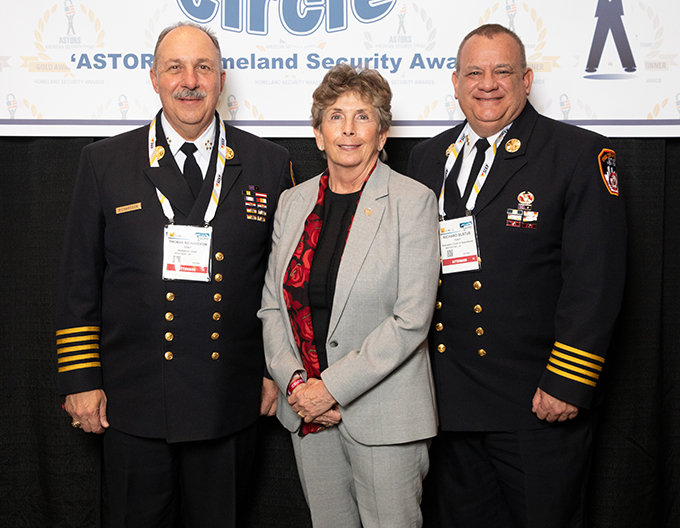
AST Honors Thomas Richardson, FDNY Chief of Department; Dr. Kathleen Kiernan, President of NEC National Security Systems; and Richard Blatus, FDNY Assistant Chief of Operations, at the 2021 ‘ASTORS’ Awards Luncheon at ISC East.
The United States was forever changed 20 years ago on September 11th, and we were fortunate to have many of those who responded to those horrific tragedies join us at the 2021 ‘ASTORS’ Awards Luncheon.
In the days that followed 9/11, the critical needs of protecting our country catapulted us into new and innovative ways to secure our homeland – which is how many of the agencies and enterprise organizations that are today ‘ASTORS’ Awards Champions, came into being.

Our keynote speaker featured a moving and informative address from TSA Administrator and Vice-Admiral of the United States Coast Guard (Ret), David Pekoske; to our attendees who traveled from across the United States and abroad, on the strategic priorities of the 64,000 member TSA workforce in securing the transportation system, enabling safe, and in many cases, contactless travel.

Legendary Police Commissioner William Bratton of the New York Police Department, the Boston Police Department, and former Chief of the Los Angeles Police Department was also live at the event, meeting with attendees and signing copies of his latest work ‘The Profession: A Memoir of Community, Race, and the Arc of Policing in America,’ courtesy of the generosity of our 2021 ‘ASTORS’ Awards Premier Sponsors.
The 2021 ‘ASTORS’ Awards Program was Proudly Sponsored by AMAROK, Fortior Solutions and SIMS Software, along with Returning Premier Sponsors ATI Systems, Attivo Networks, Automatic Systems, and Reed Exhibitions.
Why American Security Today?
The traditional security marketplace has long been covered by a host of publications putting forward the old school basics to what is Today – a fast-changing security landscape.
American Security Today is uniquely focused on the broader Homeland Security & Public Safety marketplace with over 75,000 readers at the Federal, State, and local levels of government as well as firms allied to the government.
American Security Today brings forward a fresh compelling look and read with our customized digital publications that hold readers’ eyes throughout the story with cutting-edge editorial that provides solutions to their challenges.
Harness the Power of the Web – with our 100% Mobile Friendly Publications

AST Digital Publications are distributed to over 75,000 qualified government and homeland security professionals, in federal, state, local, and private security sectors.
‘PROTECTING OUR NATION, ONE CITY AT A TIME’
AST Reaches both Private & Public Experts, essential to meeting these new challenges.
Today’s new generation of public safety and security experts need real-time knowledge to deal with domestic and international terrorism, lone wolf attacks, unprecedented urban violence, shifts in society, culture, and media bias – making it increasingly difficult for Homeland Security, Law Enforcement, First Responders, Military and Private Security Professionals to implement coordinated security measures to ensure national security and improve public safety.
These experts are from Government at the federal, state, and local level as well as from private firms allied to the government.
AST provides a full plate of topics in our AST Monthly Magazine Editions, AST Website, and AST Daily News Alerts, covering 23 Vital Sectors such as Access Control, Perimeter Protection, Video Surveillance/Analytics, Airport Security, Border Security, CBRNE Detection, Border Security, Ports, Cybersecurity, Networking Security, Encryption, Law Enforcement, First Responders, Campus Security, Security Services, Corporate Facilities, and Emergency Response among others.
AST has Expanded readership into integral Critical Infrastructure audiences such as Protection of Nuclear Facilities, Water Plants & Dams, Bridges & Tunnels, and other potential targets of terrorism.
Other areas of concern include Transportation Hubs, Public Assemblies, Government Facilities, Sporting & Concert Stadiums, our Nation’s Schools & Universities, and Commercial Business Destinations – all enticing targets due to the large number of persons and resources clustered together.
(See just a few highlights of American Security Today’s 2021 ‘ASTORS’ Awards Presentation Luncheon at ISC East. Courtesy of My Pristine Images and Vimeo.)
To learn more about ‘ASTORS’ Homeland Security Award Winners solutions, be on the lookout for the 2021 ‘ASTORS’ CHAMPIONS Edition Fully Interactive Magazine – the Best Products of 2021 ‘A Year in Review’.
The Annual CHAMPIONS edition includes a review of Annual ‘ASTORS’ Award Winning products and programs, highlighting key details on many of the winning firm’s products and services, including video interviews and more.

It will serve as your Go-To Source throughout the year for ‘The Best of 2021 Products and Services‘ endorsed by American Security Today, and can satisfy your agency’s and/or organization’s most pressing Homeland Security and Public Safety needs.
From Physical Security (Access Control, Critical Infrastructure, Perimeter Protection, and Video Surveillance Cameras and Video Management Systems), to IT Security (Cybersecurity, Encryption, Data Storage, Anti-Malware and Networking Security – Just to name a few), the 2021 ‘ASTORS’ CHAMPIONS EDITION will have what you need to Detect, Delay, Respond to, and Mitigate today’s real-time threats in our constantly evolving security landscape.
It will also include featured guest editorial pieces from some of the security industry’s most respected leaders, and recognized firms in the 2021 ‘ASTORS’ Awards Program.
-
For a complete list of 2021 ‘ASTORS’ Award Winners, begin HERE.
For more information on All Things American Security Today, as well as the 2021 ‘ASTORS’ Awards Program, please contact Michael Madsen, AST Publisher at mmadsen@americansecuritytoday.com.
Learn More…
S&T National Cooling Solutions Prize Challenge for American Innovators
AST strives to meet a 3 STAR trustworthiness rating, based on the following criteria:
- Provides named sources
- Reported by more than one notable outlet
- Includes supporting video, direct statements, or photos















